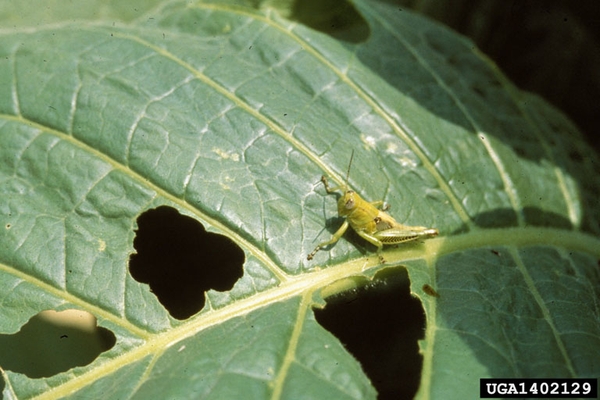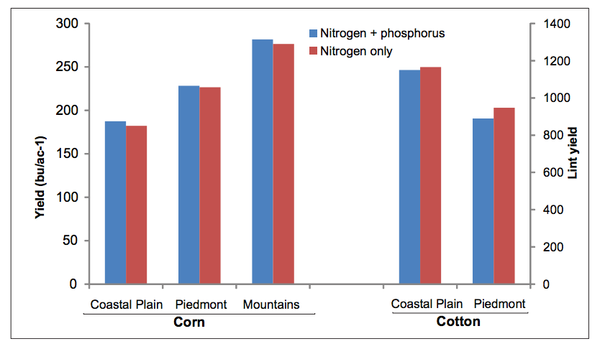Peanut Response to Apogee in Research in Bertie County Peanut Notes No. 6 2020
Results from a trial conducted with a grower in Bertie County by Billy Barrow are provided in the following …



El inglés es el idioma de control de esta página. En la medida en que haya algún conflicto entre la traducción al inglés y la traducción, el inglés prevalece.
Al hacer clic en el enlace de traducción se activa un servicio de traducción gratuito para convertir la página al español. Al igual que con cualquier traducción por Internet, la conversión no es sensible al contexto y puede que no traduzca el texto en su significado original. NC State Extension no garantiza la exactitud del texto traducido. Por favor, tenga en cuenta que algunas aplicaciones y/o servicios pueden no funcionar como se espera cuando se traducen.
Inglês é o idioma de controle desta página. Na medida que haja algum conflito entre o texto original em Inglês e a tradução, o Inglês prevalece.
Ao clicar no link de tradução, um serviço gratuito de tradução será ativado para converter a página para o Português. Como em qualquer tradução pela internet, a conversão não é sensivel ao contexto e pode não ocorrer a tradução para o significado orginal. O serviço de Extensão da Carolina do Norte (NC State Extension) não garante a exatidão do texto traduzido. Por favor, observe que algumas funções ou serviços podem não funcionar como esperado após a tradução.
English is the controlling language of this page. To the extent there is any conflict between the English text and the translation, English controls.
Clicking on the translation link activates a free translation service to convert the page to Spanish. As with any Internet translation, the conversion is not context-sensitive and may not translate the text to its original meaning. NC State Extension does not guarantee the accuracy of the translated text. Please note that some applications and/or services may not function as expected when translated.
Collapse ▲Results from a trial conducted with a grower in Bertie County by Billy Barrow are provided in the following …
Results from trials conducted with a grower in Bertie County by Billy Barrow are provided in the following links. …
See the criteria needed for county champion entries and recognition for the Group of Sixty and 5000 Pound Club …
The following link contains dates for peanut production meetings in NC and surrounding …
The following is a final report for a project funded from 2017-2019 by the North Carolina Ag Foundation and …
The following is a final report for a project funded from 2017-2019 by the North Carolina Ag Foundation and …
Head over to the NC OVT Website to find the 2019 NC State Soybean Official Variety Testing Results. The NC Soybean Variety Selection …

A research summary can be found at this link: NC State Extension Soybean Variety Performance in the Mountains …
Results from the PVQE program for NC, SC and VA can be found at the following link: PVQE_BOOK …
Results from a planting date study at Lewiston-Woodville during 2019 can be found at the following link: Peanut Response to …
Information provided by the N.C. Department of Agriculture & Consumer Services relative to paraquat use and restrictions can be …
The following article will be published in the January 2020 issue of V-C Peanut News: V-C News Article David Jordan …
The following link provides a summary of research efforts in agronomy and weed science as well as extension activities: David …
Comments of Leaf Spot Management can be found at the following link: Barbara Shew Peanut Report …
The meeting schedule for 2020 can be found at the following link: 2020 Peanut Production …
Email from Dr. Osmond: All, A committee formed by extension administration was asked to develop a standard protocol for alternative product …
Question about Soil pH and Gypsum: A grower called me this week and said he heard at a peanut meeting …
The following link includes information for the peanut yield contest (county and state champion), the 5000 Pound Club and …
The following link includes a final report for peanut production in the US provided by JLA. Foy Mills is …
The following link gets you to an interesting and informative show on how the peanut industry changed in Virginia. …

Participation in conservation practices and restrictions comes in various forms, from revocable-at-will, revocable with penalty, …

Several species of grasshoppers can cause foliar feeding damage in tobacco. They are typically most …

This Extension publication provides an overview of the tobacco budworm (Chloridea virescens), a common pest …

This factsheet for farmers describes concepts, terminology, and guidelines concerning soil sampling. Proper testing allows …

Nitrogen fertilizer products are being developed and marketed as having the potential to increase yields and …

Phosphorus (P) is the second most important nutrient in crop production but is often found …

This factsheet describes the symptoms of a shoot inhibitor herbicide injury.

This factsheet describes the symptoms of a metribuzin herbicide injury.